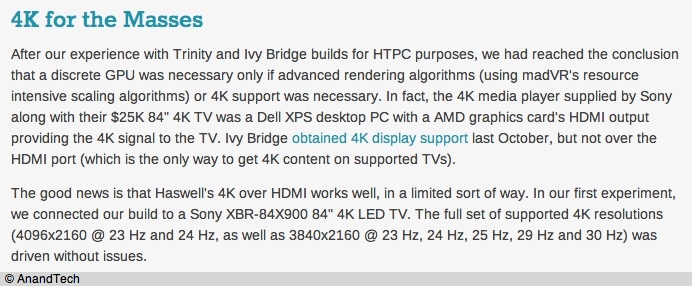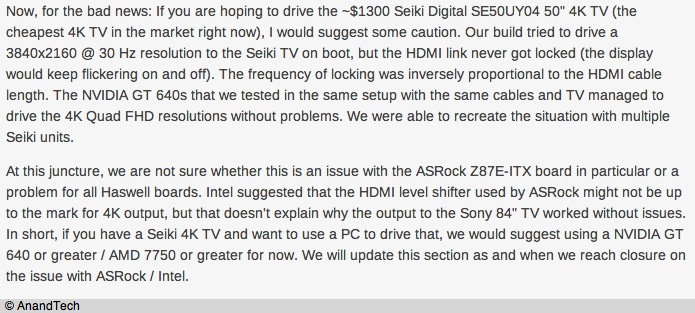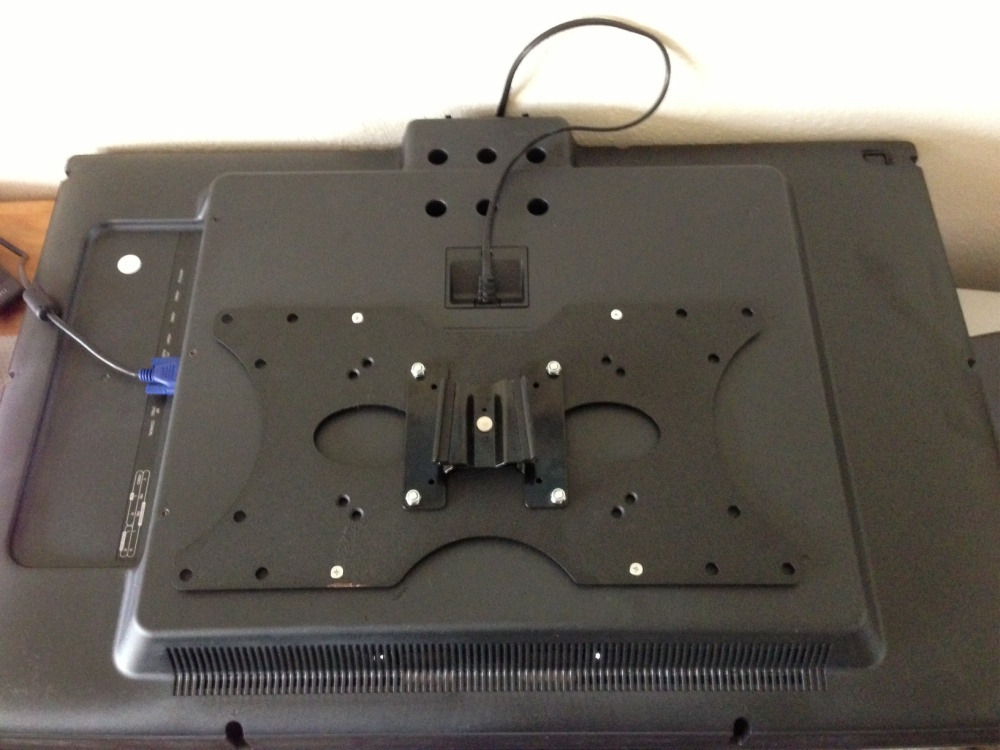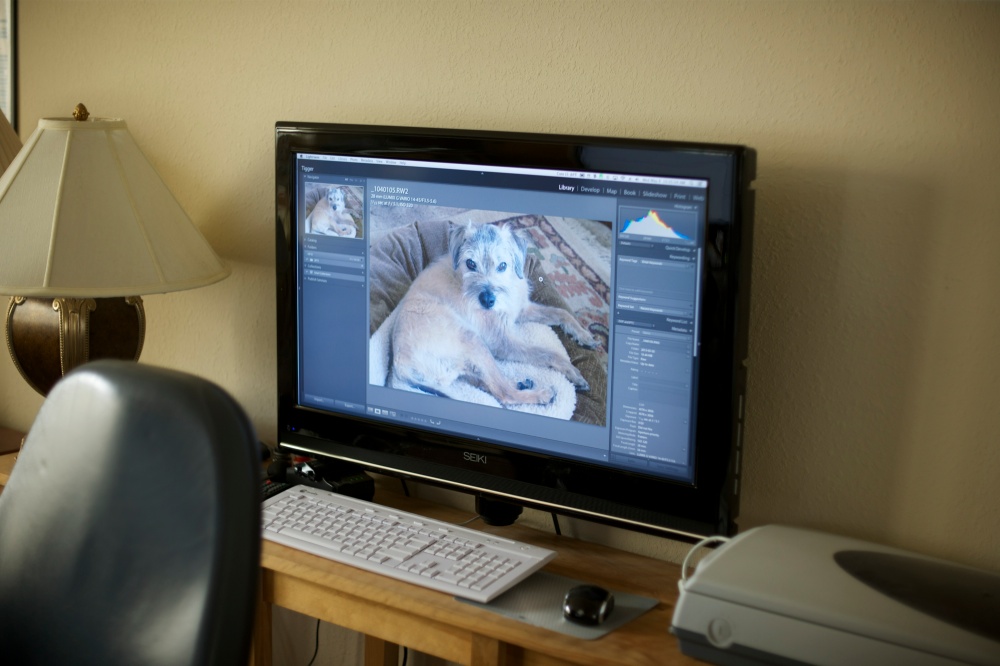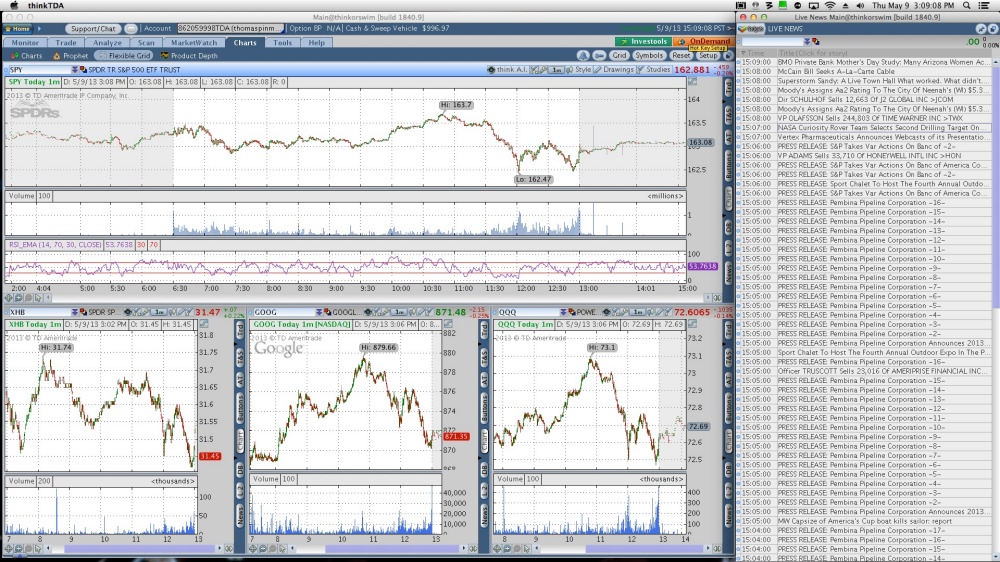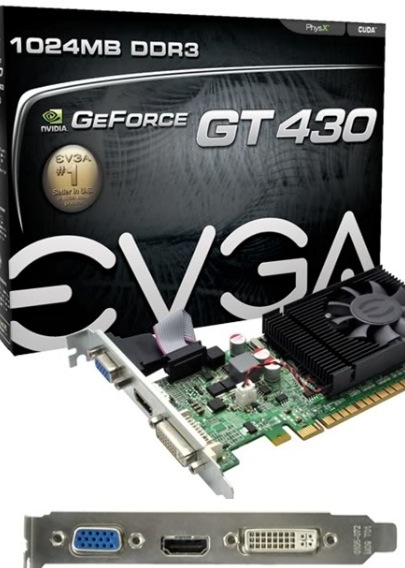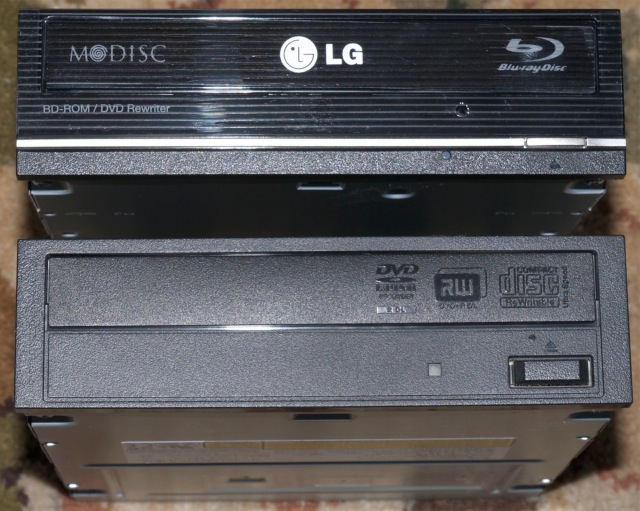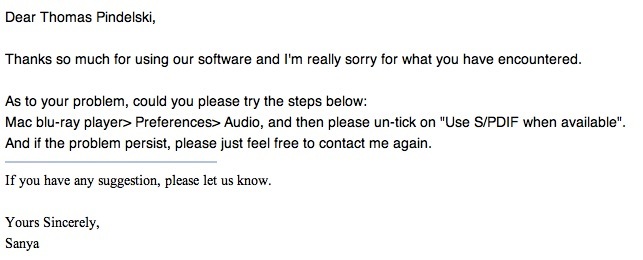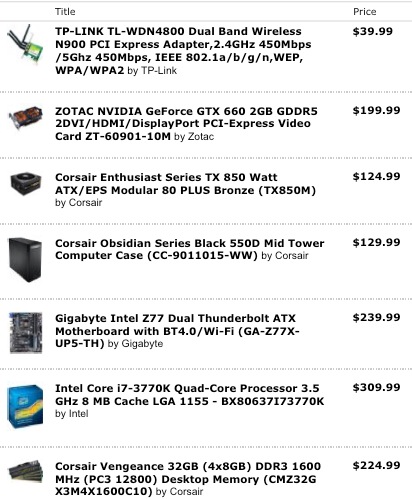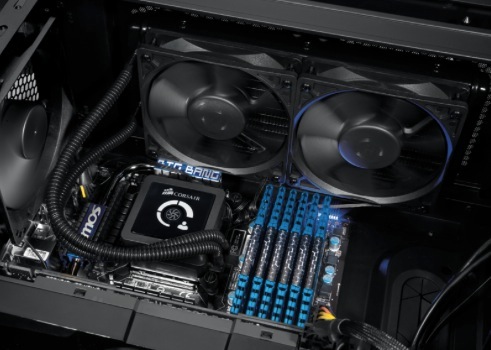Easy.
When I added Blu-Ray capability to the HackMini, it was solely with the intention of using the enhanced reader/burner to play back a handful of Blu-Ray discs. However, the convenience of rapid access to discs stored on hard disk drives nagged at me so I though I would do some testing to see what is involved in ripping Blu-Ray DVDs and storing the results on HDDs.
Most Blu-Ray discs are encrypted so a competent and current ripping application is called for. After wading through the usual collection of suspects – all seemingly from the same maker with just the names changed, and with questionable output quality – I settled on MakeMKV. OK, not the greatest product name in the history of technology, but it works well.
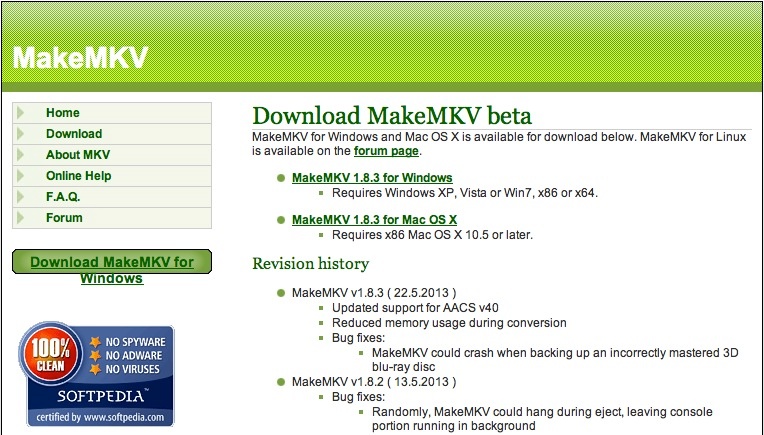
Click the image to go to the download page.
The author appears to keep the product current and there’s a useful Forum where issues are discussed. There’s even a Windows version for true masochists. Windows 8 appears not to be supported, but I can only think that is a feature rather than a limitation. The application expires after 60 days but a fresh download renews it. The purchase price is $50 and it’s worth every penny and is just reward for the developer’s sterling work.
The process is very simple. Insert the Blu-Ray DVD, fire up MakeMKV and direct the output to a destination of your choice. My first rip took 51 minutes and delivered some 46GB of output spread over many files and directories. Most of this is junk which can be discarded – extras, advertisements, menus, etc. All that needs be done is for the one big file to be retained. After a few rips I have found that file – it resides in the ‘BDMV/STREAM’ sub-directory – is typically some 28GB in size. (See ‘Selective Ripping’, below). The file is renamed, moved to the destination of choice and all the remaining 18GB of junk can be erased. Remember to go to Finder->Delete Trash to free up the related disk space. For comparison, a regular DVD delivers a file of 4-7GB and takes 10-14 minutes to rip. For reference, the HackMini uses a Gigabyte H67M-D2-B3 motherboard, an Intel i3 SandyBridge CPU and a modest nVidia GT430 graphics card. RAM is a slim 8GB of 1333MHz speed.
The ripping process creates little thermal stress for the HackMini. The usual CPU temperature of 88F rises to 104F during a rip, and the CPU cooler is the stock (and not very good – though it is very quiet) one which ships with Intel’s CPUs. With a service limit of 176F it’s not like anything untoward is about to happen to the CPU here.
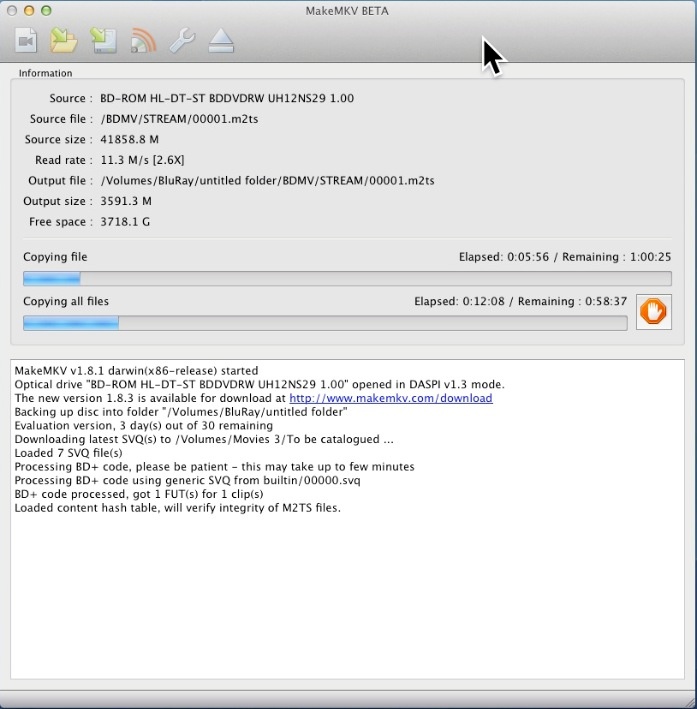
MakeMKV at work, ripping the key file from a Blu-Ray DVD. The total download
time is overstated here, typically falling to ~51 minutes through conclusion.
The ripped file needs no further conversion if played using the applications mentioned below on a Mac. If the destination is an iPad or iPhone, then Handbrake can be used to convert the file but why anyone would waste their time ripping Blu-Ray movies for viewing on those small displays is beyond me.
On my first attempt I placed that file on my external Mediasonic box which is connected to the HackMini using an USB2 cable. There are at least two players which can play the ripped file – the latest version of VLC (free) and the inexpensive Mac Blu-Ray Player which currently sells for $40. Unfortunately, playback was not good, with some stuttering using VLC and heavy stuttering with Mac Blu-Ray Player. I guessed the issue lay with the slow data transfer speed over USB2, and relocated the file to one of the internal drives in the HackMini, a small 2.5″ spinning disc, 5400rpm SATA 2 3GB/s notebook drive. Perfect. The movie played back without hesitation and the sound was excellent. All the various language sound tracks, together with the director’s voice over track were available, as were all the various subtitle features, all seeming embedded in this one file. Nice.
However, the boot and backup drives in the HackMini are very small so this is not a long-term solution. Accordingly, I zipped over to Amazon and bought one 4TB 7200rpm, SATA3 6GB/s HDD, for all of $175. Whether you buy 2TB, 3TB or 4TB, storage cost is the same at approximately $45/TB.
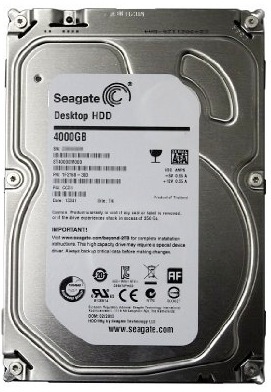
Seagate 4TB HDD.
The HackMini uses a largish SilverStone enclosure which has capacity for two internal full-sized HDDs (four will fit at a push) in addition to the two notebook drives for OS X and OS X backup. It was a moment’s work to install the 4TB whopper which, at say 30GB per Blu-Ray movie, will store some 130 movies at a storage cost of $1.35 per movie. Given that I only buy Blu-Ray movies of all time classics, such as those mentioned here, meaning very few, the ability to store 130 movies on the internal drive should last for ages. By the time that HDD is full I suppose we will have 8TB HDDs available for under $100!
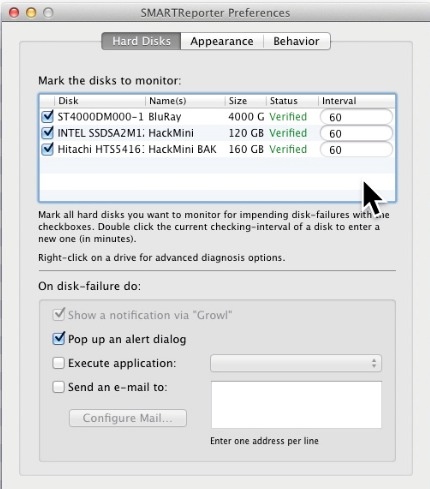
SMARTReporter confirms that all is well with the Seagate 4TB Internal HDD.
For reference, I did test the 4TB Seagate drive in the external Mediasonic box and it was both recognized and quickly formatted using Mac OS X’s Disk Utility. Currently my Mediasonic boxes use 3TB HDDs, so it’s nice to know that they will work fine with larger sizes. Each holds four drives.
Back-up? No biggie. I’ll just keep the Blu-Ray original DVDs in the cardboard box in the corner of the garage which the black beetles call home.
Video and audio quality? Identical in every way to the original Blu-Ray DVDs viewed on my 1080p 55″ LCD TV.
If you are not a Hackintosh user, preferring to use something like a MacMini, I would expect that an external HDD enclosure connected to the MacMini using USB3 should provide adequate data feed rates to avoid stuttering, but I have not tested this. Mac users will also have to add an external Blu-Ray reader as no Mac ever made comes with one. For those few very special movies – the newly remastered The Godfather I/II/III and Lawrence of Arabia are stunning showpieces for this technology – it’s worth it. Those movies may be 40-50 years old but they don’t make them like that any more.
Meanwhile, the HackMini has gradually grown to become a powerful home theater PC. Having started life with the sole purpose of routing ripped DVD content from hard drives to the TV, it now rips and stores Blu-Ray DVDs, and acts as a conduit for some 24TB of movies with one mouse click via the splendid DVDpedia application, relays streaming Netflix and Amazon VOD, fronts for the BBC’s no less splendid iPlayer, plays iTunes music and, why, it can even purchase ridiculously overpriced movies from Apple, all controlled with an RF Microsoft mouse, which is superior in every way to any Bluetooth device. Best of all, it comes with faultless voice control whereby I simply turn to my son: “Winston, fire up ‘Lawrence of Arabia’, the Blu-Ray version if you don’t mind”. By comparison ask Siri to do that and you will likely get driving instructions to Bangladesh. If you want the optimal price/performance configuration for a modern build (the HackMini has some now discontinued components) drop me a line and I will be pleased to help. If you are a movie buff, I strongly encourage you to build one. Assembly borders on the trivial and the software hacking is now very easy with the latest free tools available from the Hackintosh community. Today’s construction cost for a HackMini with a single SSD boot/OS drive is little over $500 and no separate graphics card is needed, owing to the excellent HD4000 integrated GPU which comes with the current IvyBridge i3 CPU, more than capable for the intended use.
Waiting for Haswell: I asked ace Hack builder, the pseudonymous FU Steve, to add a few words on Intel’s upcoming Haswell line of CPUs. What follows was written by him.
“Intel’s current IvyBridge CPUs (i3/i5/i7) are about to be replaced with the 2013 Haswell variants. The significant changes are lower power consumption, good for mobile users, and the integrated HD4600 GPU which updates the already pretty competent HD4000 in the IvyBridge line. The i5 ($195) and i7 (starts at $300) Haswell CPUs will be out first with the i3 ($130?) to follow in the summer. While the performance of the existing integrated HD4000 GPU in IvyBridge is more than adequate for a home theater PC (and for Photoshop/Lightroom use) like the HackMini, it makes sense to wait for the Haswell i3 version. Unlike IvyBridge, which uses the same LGA1155 CPU motherboard socket as its SandyBridge predecessor, Haswell has yet again changed to a new socket (LGA1150) dictating a new motherboard, so it makes sense to wait for both if you can. The bottom line is that no longer will Hack builders have to spend money on a separate GPU card, thus saving $100-250. Only hard core gamers will need to make the additional outlay, where premium graphics performance is required for the most demanding games.”
Thank you, FU.
Update: Selective Ripping
After posting a question on the MakeMKV forum an expert replied that clicking the disk icon in MKV would make selective ripping available – someting unclear from the instructions:
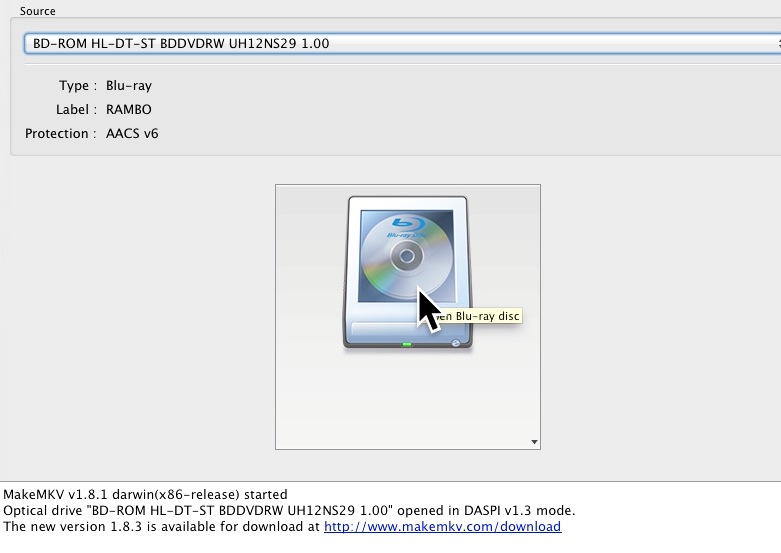
Click the disc icon.
On doing so you are presented with selections, one of which is the equivalent of ‘rip main movie only’ common in other ripping apps.
Select the main movie (if there are two, the larger is likely the one with the director’s commentary, as here – avoid):
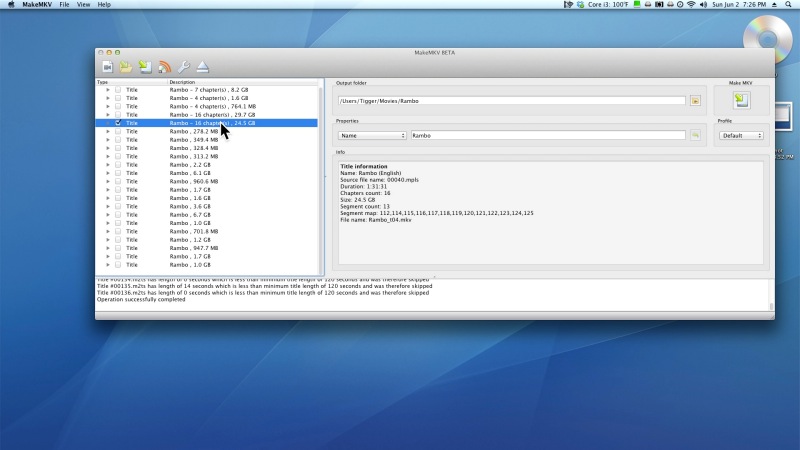
And off you go – saving 7 minutes per rip and having all chapters arranged into one file for you in those few cases where the DVD maker has tried to obfuscate issues by spreading the big movie file over several smaller non-contiguous ones. Not that uncommon.
If MakeMKV cannot decide which files to join for the main feature, read the above linked post, go to AVSforum for the file names to join, rip the full DVD then join those files into one using Mkvtoolnix.

